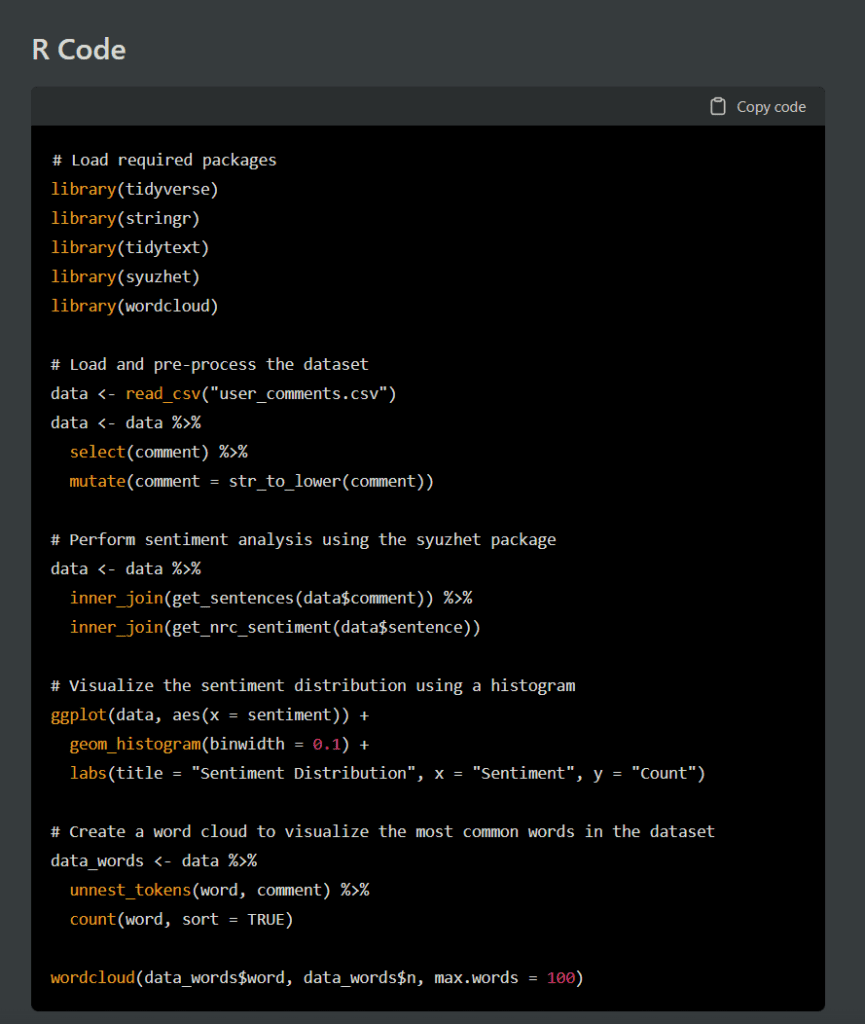User sentiment is a measure of the attitudes and emotions of a group of users or consumers towards a particular product, brand, or topic. In data analytics, user sentiment is often analyzed using natural language processing (NLP) techniques and machine learning algorithms to extract and analyze the sentiment expressed in text data, such as customer reviews or social media posts.
The analysis of user sentiment can provide valuable insights for businesses and organizations. For example, sentiment analysis can be used to identify trends and patterns in consumer attitudes and emotions, which can help inform marketing and customer service strategies. Sentiment analysis can also be used to monitor and track the performance of a brand or product, and to identify areas for improvement.
Here are some ways in which user sentiment analytics can be used in a digital strategy:
- Identify trends and patterns in consumer attitudes and emotions: By analyzing user sentiment data, businesses can identify trends and patterns in consumer attitudes and emotions, such as the most common sentiments expressed by consumers and the factors that influence sentiment. This information can be used to inform marketing and customer service strategies, and to identify areas for improvement.
- Monitor and track the performance of a brand or product: By regularly tracking and analyzing user sentiment data, businesses can monitor the performance of their brand or product, and identify changes in sentiment over time. This can help businesses understand the effectiveness of their marketing and customer service efforts, and make adjustments as needed.
- Identify opportunities for customer engagement and interaction: User sentiment analysis can help businesses identify opportunities for engaging and interacting with customers. For example, sentiment analysis can be used to identify customers who are expressing positive sentiment towards a brand or product, and to target these customers with personalized offers or promotions.
- Use sentiment analysis to inform content creation and marketing efforts: By understanding the sentiments and emotions of consumers, businesses can create content and marketing campaigns that resonate with their target audience. For example, businesses can use sentiment analysis to identify the topics and themes that are most likely to generate positive sentiment, and create content and campaigns that focus on these topics.
User sentiment analysis is an important tool in data analytics, as it allows businesses and organizations to better understand and respond to the attitudes and emotions of their customers and users. By analyzing user sentiment, businesses can make more informed decisions and improve their products and services to better meet the needs and preferences of their customers.
To track user sentiment using R and Python, you can use a combination of natural language processing (NLP) techniques and machine learning algorithms. Here is an example of how this can be implemented:


- Echoes & Algorithms: Ethical AI in Media Production - October 28, 2025
- Creativity and AI Ethics: An Essential Toolkit for Game Dev Success - August 1, 2025
- Echoes on the Canyon Walls: Why the Pecos Rock Art is North America’s Oldest Grand Media - May 1, 2025






